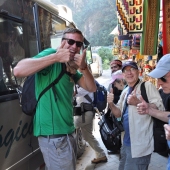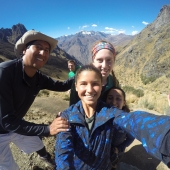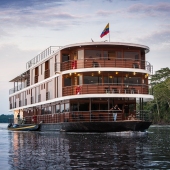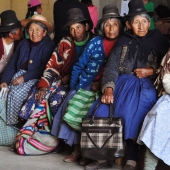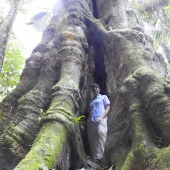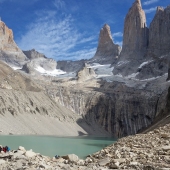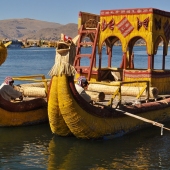
Machu Picchu Certified as First Carbon-Neutral Wonder of the World
On September 2, 2021, the historic Inca citadel of Machu Picchu was recognized by the Green Initiative organization as the first carbon-neutral tourist destination in the world. This is a pretty big deal. Just to be clear, it doesn't mean the goal of zero carbon emissions has been achieved. It's like losing weight. You start with a plan in your head and follow with your actions. Then the work begins. Private and public sectors committed to and already implemented changes that have demonstrated success and will result in a 45% reduction in carbon by 2030 and zero carbon emissions by 2050. (it's like losing 10 lbs out of 100) I'm happy to note that the foundation of this plan involves physically changing something, not buying carbon offsets. In my opinion, you shouldn't be able to buy your way into the blessed bosom of the global CO2 reduction movement. Protecting a resource, whether it's natural or human-derived, takes work and we have to accept that certain human behaviors must change. That's on every one of us baby.
A little background on the history of honors bestowed on Machu Picchu. (Just a little bit of history. I promise)
In 1981, Machu Picchu was declared a Peruvian Historical Sanctuary, and in 1983, a UNESCO World Heritage Site. In 2007, Machu Picchu was annointed, by popular vote, as one of the New Seven Wonders of the World in a worldwide internet poll.
What kinds of ecological problems were occuring at Machu Picchu?
When UNESCO put Machu Picchu on the List of World Heritage sites in Danger in 2016, it was a wake up call, a slap in the face, a kick in the pants for Peru. Something had to be done. I've been following the transformation to Machu Picchu over the years and have documented the transition from greedy bastards to caretakers trying to implement strategies to better manage "the asset." The Peru government was literally living in the "here and now." In other words they could hardly see over the top of the chalice of golden gravy they were swimming in. "What Danger List? What is UNESCO again?" There didn't appear to be any serious long-term business plan to maintain, invest and create strategies to manage the continual increase in tourism. But with a new international airport being built in Chinchero, not to mention the next breakthrough idea of building the first ever road to Machu Picchu. (currently everyone must hike in on the Inca Trail or take the train), Machu Picchu ruins were already pushed to the limit and the region was on the verge of a waste management crisis. So. In 2016, the Peruvian government started cracking down on the tourist experience. If you think about it, there's not much they can do about the weather. Aside from addressing damage and preventing the jungle from creeping in again, Machu Picchu is an outdoor museum and all the displays of art and culture are exposed to sun wind, rain and erosion every day. It's an art curator's nightmare! I remember watching workers cleaning the "jungle" off the stone surfaces and scraping out the plants sprouting between the cracks with a moon-shaped hand sickle. It's a laborious low-tech job that must be done. But then, I always think about the bathrooms. Don't ask me why. There is literally 1 restroom located at the main entry to Machu Picchu. There's a side for Hombres and a side for Mujeras. I'm guessing 20 stalls for each. Just about 100% of 250,000 visitors per year powder their noses before entering the ruins. Everything you've heard about the limitations of plumbing in developing countries is mostly true. How in the heck do you treat sewage in a remote semi-tropical cloud forest? I'll save that conversation for another day.
How did Machu Picchu begin the process of reducing carbon emissions?
The first step was to calculate their carbon footprint and find out just how bad it was. The next step was to identify carbon emitting culprits. Where was the carbon coming from? With an estimated 5% of Peru's total carbon emissions coming from tourism, making changes at Machu Picchu would provide the biggest bang for smallest bucks. And being the most visited national and international travel destination in Peru, making changes in Machu Picchu would set an example for reforms in the surrounding communities including the thriving gateway metropolis of Cusco. Gone are the days of wandering willy-nilly around the ruins, up and down, in and out at will. The Peru government woke up and began enacting reforms that would revise visitor expectations and gradually enable policies to reduce capacity, manage visitors through one-way circuits, limite the number of entries per ticket and hire more rangers to supervise the masses.
What did Machu Picchu alliance members do to qualify for carbon neutral certification?
- installed two plastic compactors to compress 7 tons of PET per day. Everyone drinks purified water and single-use plastic bottles continue to be a significant source of plastic waste.
- cooking oil waste from restaurants and hotels in Aguas Calientes are transformed into biodiesel and organic glycerin by a biodiesel machine. Otherwise into the Vilcabamba river it goes!
- invested in a pyrolysis plant to covert organic waste into biochar which is used locally as a fertilizer for crops and reforestation projects
Who are the Machu Picchu carbon reduction alliance stakeholders and supporters?
- Darwin Baca, district Mayor of Machu Picchu
- Inka Terra (Luxury Hotel)
- MINAM Ministry of the Environment of Peru
- SERNANP National Service of Protected Natural Areas
- PROMPERU Commission for the Promotion of Peru for Export and Tourism
- Sociedad Hoteles del Perú Association
- APTAE Peruvian Association of Adventure and Ecotourism Companies
Can tourists do anything to help Machu Picchu acheive zerio carbon emissions?
Preventing carbon emissions is even better than trying to reduce them after they're released. Yes, I know. I'm a genius. The most effective action that tourists can take (IMO) to reduce carbon emissions would be to eliminate, or at least scale down the number of single-use plastic bottles and food wrappers they generate. Eventually, it would be ideal if all the hotels in Aguas Calientes and the trains, could provide sustainable sources of purified drinking water to refill reusable bottles. Most of the jungle lodges already do this. In reality we should do this all over the world. (Jacquie for President!) Unfortunately, even in western countries where the municipal tap water is considered safe for drinking, (although I admit that many will dispute the definition of "safe") many people choose to drink water from other more expensive and less eco-friendly sources. I think it's time that local and national businesses get together to review consumer preferences and practices when it comes to drinking water, especially when on the go. Standards for what consumers will accept as their primary source of drinking water have gone through significant changes in the last 20 years. And continue to evolve. When I travel, I carry a UV light purification bottle and fill it from the faucet in my hotel. I use this water to refill nalgene pouches. These pouches come in various sizes and can be utilized for different activities. (BTW, it's not easy to find the perfect lightweight, cheap, water purification system. I've been through several! If you have one you like, send it to me. I love to share ideas with our groups!)
Has the Peru government successfully applied other strategies to protect Machu Picchu?
Yes. One of the best things the Peru government has ever done, and I think this should be yelled loudly from the treetops, is that they did nothing. What I mean, is that, in inspite of the temptation to monetize the ancient citadel, they chose not to. I'm assuming that's what they did. My heart hopes that they realized how distracting it would be to sell plastic statues of King Pachacutec next to the sacred stone walls of the Inca. They could have allowed vendors inside to sell water and snacks or even t-shirts. But no. All of that is relegated to the village of Aguas Calientes about 30 minutes away by bus. They could have (well maybe) installed electric and plumbing services and lit that baby up like the worlds' "you-know-who" favorite theme park at night. When visitors enter Machu Picchu, you really feel the tingle that can only come from walking in the hallowed footprints of the ancient ones. The Inca who lived, died and celebrated in those stone buildings and on those exact same paths. It gives me a thrill every time I visit. (which is a lot)
Most of us are not naive enough to believe that the path to carbon neutral enlightenment is clearly marked and ready to go. The trail has drop offs, steep climbs and unknown obstacles. One of the biggest is the controversy about whether or not there is a universal problem with global emissions. Let's say there isn't a problem. Reducing our use of disposable plastic might have other benefits. I'm taking a chance that by changing my personal habits I can at least reduce my contribution to the risk of harm to the environment and perhaps humans. If I'm wrong, then my practice is just a good exercise for my soul. I can live with that.


